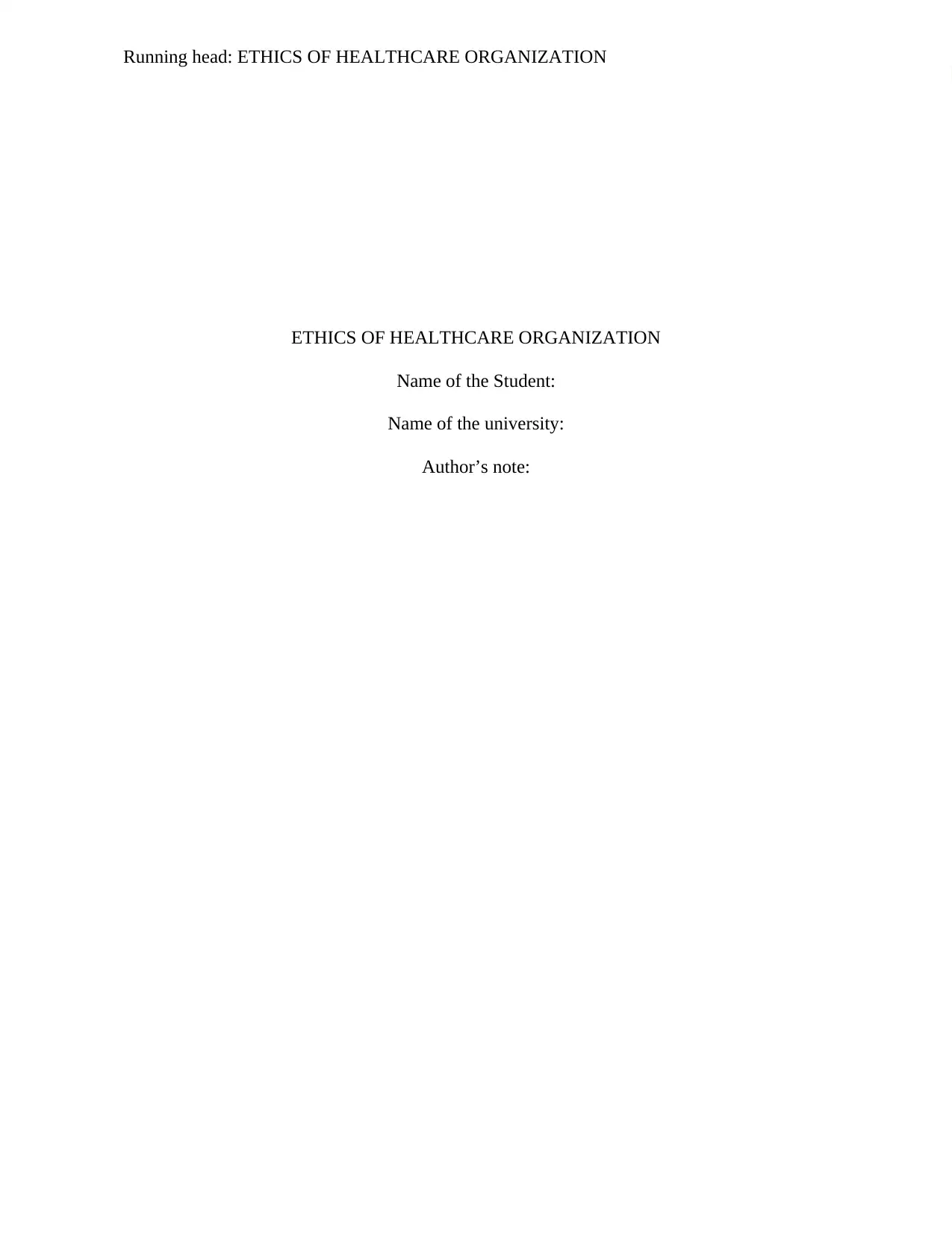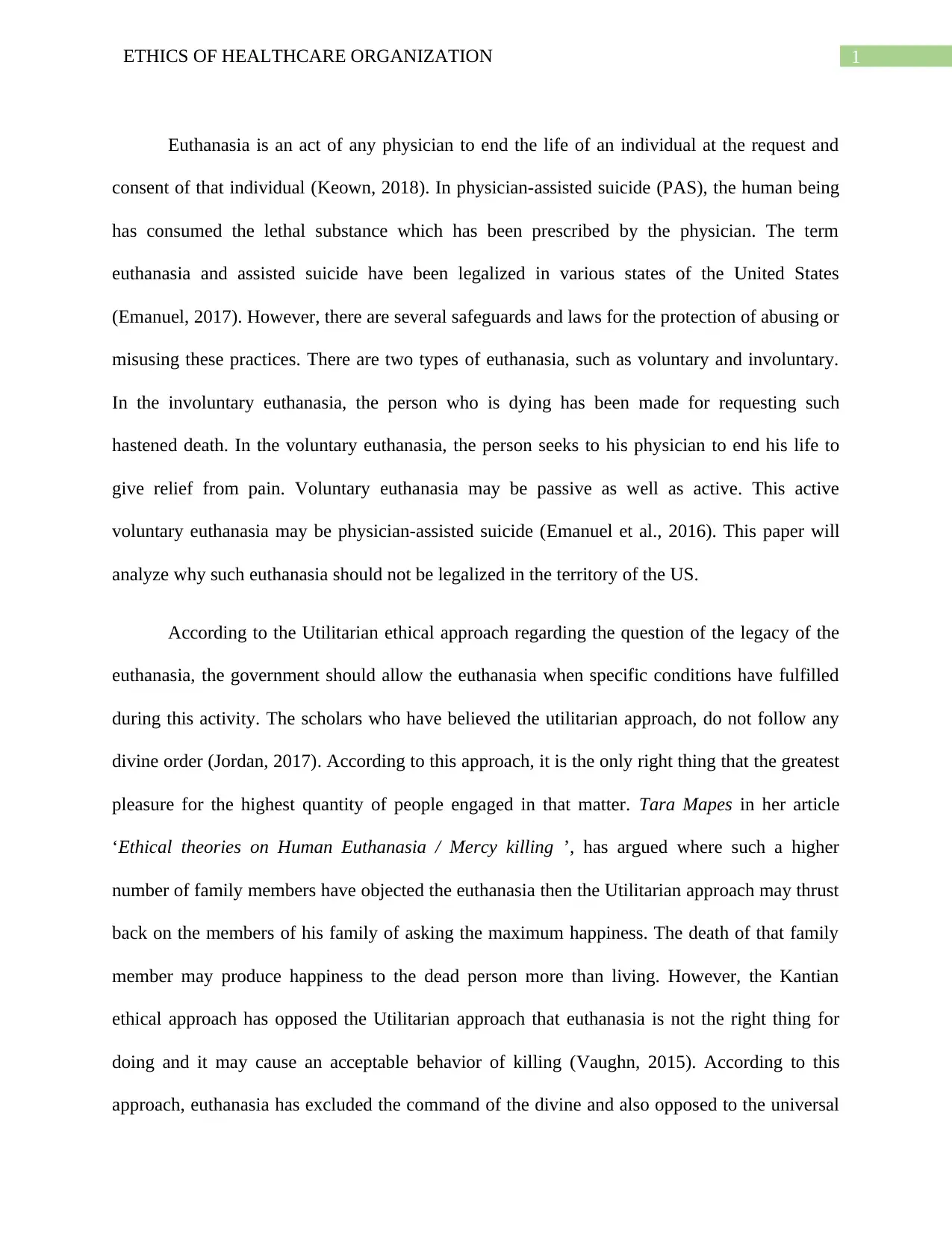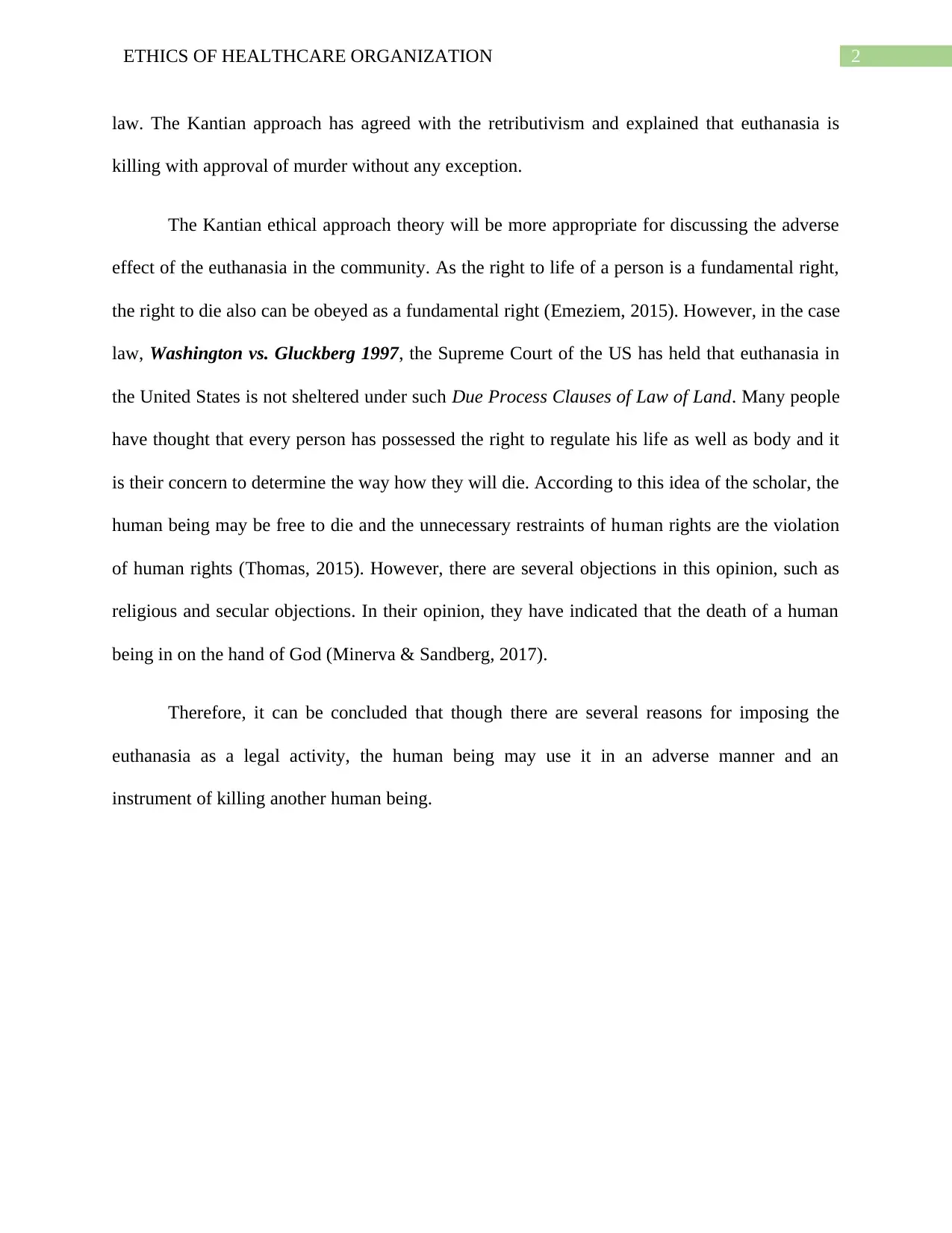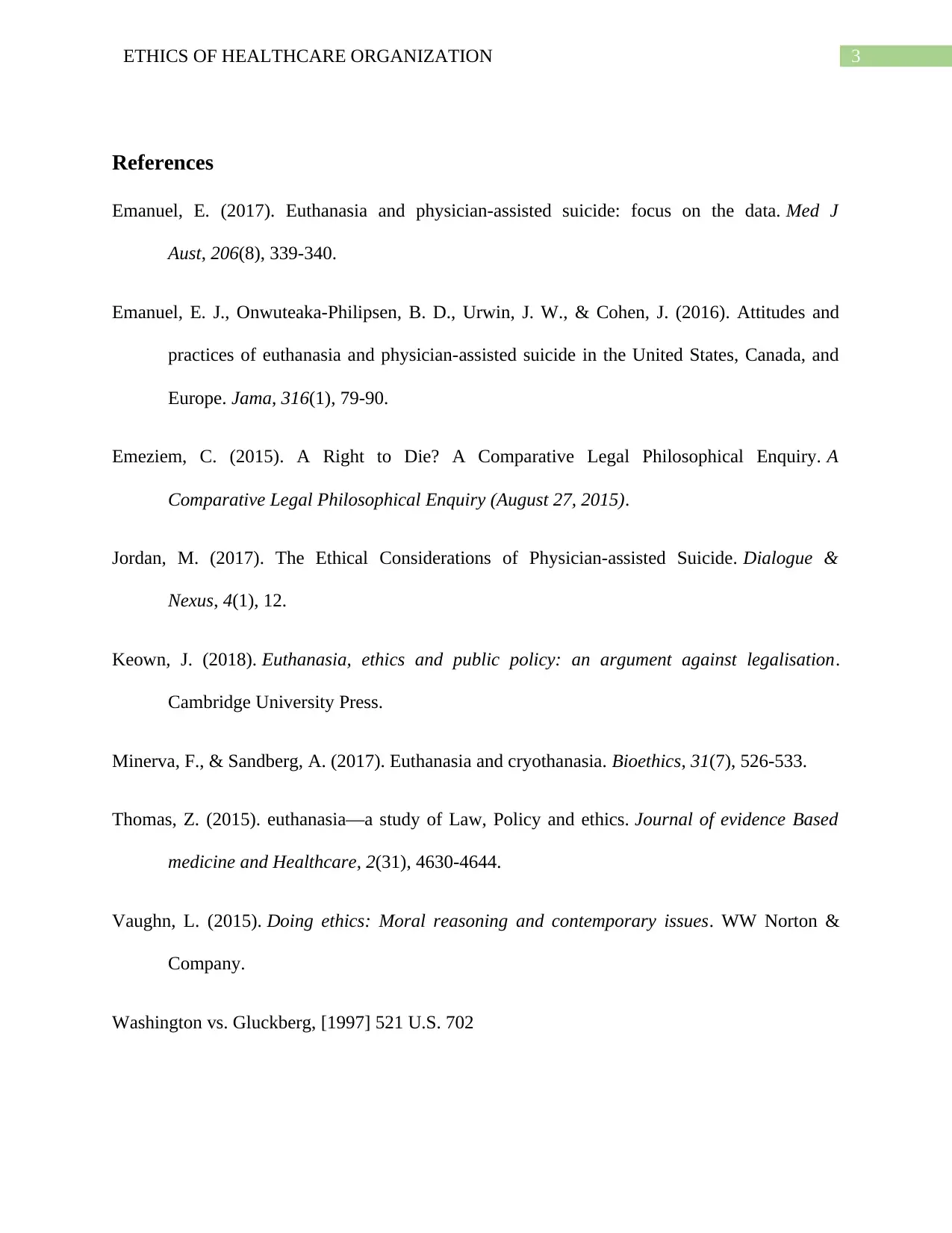Ethics of Euthanasia: Analysis and Argument Paper - HEA 4303
VerifiedAdded on 2022/08/15
|4
|947
|22
Essay
AI Summary
This paper, written for HEA 4303 at the University of Houston Downtown, examines the ethics of euthanasia and physician-assisted suicide. It begins by defining euthanasia and differentiating between voluntary and involuntary forms. The paper then presents arguments for and against the legalization of euthanasia in the US, exploring utilitarian and Kantian ethical approaches. It discusses the utilitarian perspective, which considers maximizing happiness, and the Kantian perspective, which opposes euthanasia as a violation of the right to life. The paper references the Supreme Court case Washington vs. Gluckberg, which ruled against a constitutional right to euthanasia, and highlights objections to euthanasia based on religious and secular viewpoints. The author concludes that, despite potential justifications, the practice of euthanasia could be misused. The paper uses several sources to support its arguments. This assignment provides a comprehensive overview of the ethical considerations surrounding euthanasia.
1 out of 4











![[object Object]](/_next/static/media/star-bottom.7253800d.svg)